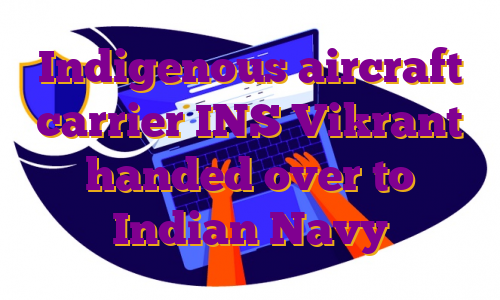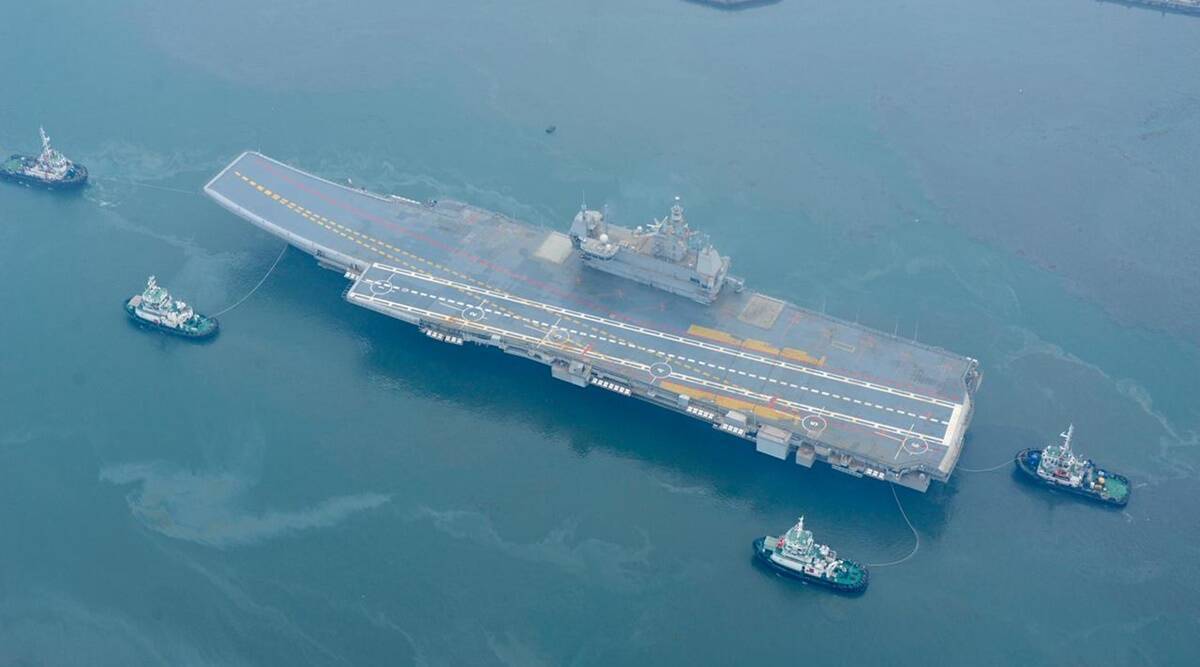The Cochin Shipyard on Thursday handed over to the Navy the indigenous aircraft carrier Vikrant, which was designed by the Navy’s in-house Directorate of Naval Design and will likely be commissioned on August 15.
It is named after India’s first aircraft carrier, the Indian Naval Ship (INS) Vikrant, which played a significant role in the 1971 war. The 262-metre-long carrier has a full displacement of close to 45,000 tonnes, much larger and advanced than her predecessor. The aircraft carrier is powered by four gas turbines totalling 88 MW power and has a maximum speed of 28 knots. Built at an overall cost of close to Rs 20,000 crore under a contract between the defence ministry and the shipyard, the project progressed in three phases ending in May 2007, December 2014 and October 2019 respectively. Its keel was laid in February 2009.
The aircraft carrier will be initially with the western naval command.
With an overall indigenous content of 76 per cent, the aircraft carrier is a perfect example of the quest for Aatma Nirbhar Bharat and provides a thrust to the government’s Make in India initiative, the Navy said. With the delivery of Vikrant, India has joined a select group of nations having the niche capability to indigenously design and build an aircraft carrier.
Vikrant has been built with a high degree of automation for machinery operation, ship navigation and survivability, and has been designed to accommodate an assortment of fixed-wing and rotary aircraft. The ship would be capable of operating an air wing consisting of 30 aircraft comprising MIG-29K fighter jets, Kamov-31, MH-60R multi-role helicopters, in addition to indigenously manufactured advanced light helicopters and light combat aircraft. Using a novel aircraft-operation mode known as STOBAR (Short Take-Off but Arrested Landing), the aircraft carrier is equipped with a ski-jump for launching aircraft, and a set of “arrester wires” for their recovery onboard.
The aircraft carrier has a large number of indigenous equipment and machinery from major industrial houses in the country such as BEL, BHEL, GRSE, Keltron, Kirloskar, Larsen & Toubro, Wartsila India etc as well as over 100 micro, small and medium enterprises. The indigenisation efforts has also led to the development of ancillary industries besides the generation of employment opportunities and bolstering of plough-back effect on the economy, both locally and nationally.
A major spin-off of this is the production of indigenous warship-grade steel through a partnership between the Navy, DRDO and the Steel Authority of India (SAIL), which has enabled the country to become self-sufficient with respect to warship steel. Today all the warships being built in the country are being manufactured using indigenous steel, defence officials said.
The delivery of Vikrant was marked by the signing of acceptance documents on behalf of the Navy by the commanding officer-designate of Vikrant, representatives of the naval headquarters and the warship overseeing team (Kochi) and the chairman and managing director on behalf of the Cochin Shipyard.
The aircraft carrier was delivered to the Navy following extensive user-acceptance trials between August 2021 and July 2022, during which performance of its hull, main propulsion, auxiliary equipment, aviation facilities, weapon and sensors as well as its sea-keeping and manoeuvring capabilities were proved to be satisfactory. The delivery is the culmination of a long design, build and trials phase, during which both the Navy and the shipyard had to overcome a multitude of unprecedented technical and logistic challenges, including the Covid pandemic and the changed geopolitical scenario.
The indigenous aircraft carrier will soon be commissioned into the Navy as the INS Vikrant, which will bolster the country’s position in the Indian ocean region and its quest for a blue-water Navy.
.


